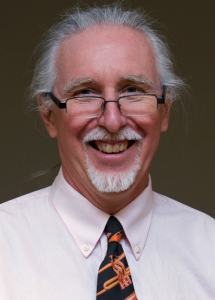 As I opened the over-sized cardboard box, I first noticed an ancient-looking coloring book page with pastel markings of a bunny and an egg. But the next level of excavation in this container my aunt had dutifully kept for decades yielded an advertisement carefully cut out of a magazine when I was likely still in single digits.
As I opened the over-sized cardboard box, I first noticed an ancient-looking coloring book page with pastel markings of a bunny and an egg. But the next level of excavation in this container my aunt had dutifully kept for decades yielded an advertisement carefully cut out of a magazine when I was likely still in single digits.
The ad was a drawing of familiarly-dressed Puritans and “Indians” sitting at a backyard picnic table with a grill going in the background. This backyard mash up merged the 1960s and the 1620s in a seemingly magical way.
I pondered the national mythology around Thanksgiving — two communities committed to sharing out of abundance for the good of all. What a beautiful image for an age of racial strife.
Roxanne Dunbar-Ortiz challenges this idealized image a bit in her 2014 book “An Indigenous Peoples’ History of the United States.”
WHILE THE FIRST “Thanksgiving” is said to have taken place at Plymouth Colony between the Wampanoag Nation and the Puritans, similar events were replicated wherever settlers were experiencing difficulty producing sufficient food for their colonists. Dunbar-Ortiz recounts this experience regarding a similar situation in the Virginia Colony:
“The first Jamestown settlers lacked a supply line and proved unable or unwilling to grow or hunt for their own sustenance. They decided that they would force the farmers of the Powhatan Confederacy — some thirty polities — to provide them with food. Jamestown military leader John Smith threatened to kill all the women and children if the Powhatan leaders would not feed and clothe the settlers as well as provide them with land and labor. The leader of the confederacy, Wahunsonacock, entreated the invaders:
Why should you take by force that from us which you can have by love? Why should you destroy us, who have provided you with food? What can you get by war? … What is the cause of your jealousy? You see us unarmed, and willing to supply your wants, if you will come in a friendly manner, and not with swords and guns, as to invade an enemy.”
This historic account is so different than the image presented by our cultural communication. It is so tempting to buy into the myth of hospitality that we ignore the reality of hostility.
It is so tempting to buy into the myth of hospitality around Thanksgiving that we ignore the reality of hostility.
Even as I write this, about a dozen rostered and lay leaders from the Minneapolis Area Synod are driving out to Standing Rock Reservation in North Dakota to stand in solidarity with that Water Protectors opposing the Dakota Access Pipeline. Previous delegations from the synod have been hospitably received. They plan to listen, to provide infrastructure support, and to stand beside those who are encamped.
In a November 14 statement, Presiding Bishop Elizabeth Eaton said, “This past August, the 2016 ELCA Churchwide Assembly passed a resolution repudiating the doctrine of discovery. In it we pledged to ‘practice accompaniment with Native peoples.’ The doctrine declared that indigenous land was ‘unoccupied’ as long as Christians were not present. … Many of us in this church who are immigrants have benefitted from the injustices done to the original inhabitants of this land where we now live and worship. … When we repudiated the doctrine of discovery, we Lutherans pledged to do better together in the future than we have in the past.”
After Bishop Eaton acknowledged the complexity of the issues facing the church and the society, she encouraged congregations to:
- stand with the Standing Rock Sioux tribal members
- pray for them and their allies
- offer material support
- examine the racism inherent in our social system, contributing to the current crisis
As we gather around table this Thanksgiving — whether with families of origin or families of choice — I hope we can remember the warmth of hospitality without forgetting the challenge of hostility.
